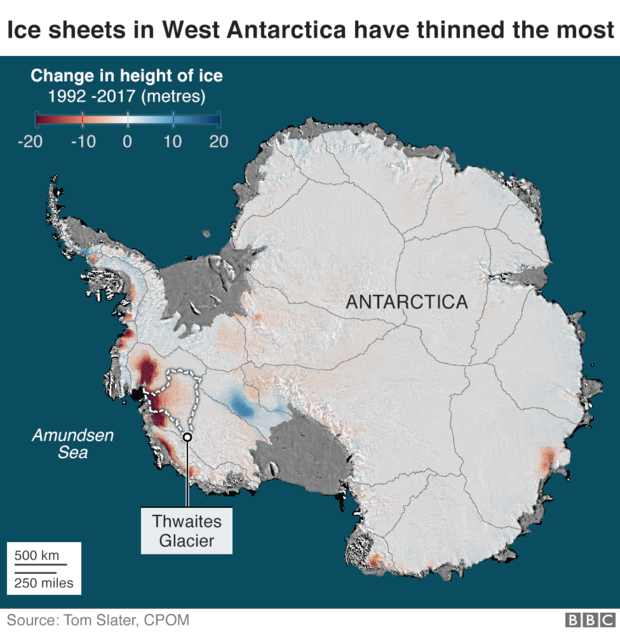#Antarctica, #ThwaitesGlacier #MeltingIce #WarmWater #Scientists
By Sophie Lewis
Scientists have found warm water beneath Antarctica's "doomsday glacier," a nickname used because it is one of Antarctica's fastest melting glaciers. While researchers have observed the recession of the Thwaites Glacier for a decade, this marks the first time they detected the presence of warm water – found at a "vital point" beneath the glacier.
A news release on the findings called it an alarming discovery.
"The fact that such warm water was just now recorded by our team along a section of Thwaites grounding zone where we have known the glacier is melting suggests that it may be undergoing an unstoppable retreat that has huge implications for global sea-level rise," David Holland, director of New York University's Environmental Fluid Dynamics Laboratory and NYU Abu Dhabi's Center for Global Sea Level Change, which conducted the research, said in the news release.
"Warm waters in this part of the world, as remote as they may seem, should serve as a warning to all of us about the potential dire changes to the planet brought about by climate change," he said.
The collapse of the 74,000-square-mile Thwaites — which some scientists see as the most vulnerable and significant glacier in the world when it comes to sea-level-rise — could release a mass of water roughly the size of Florida or Great Britain. Its melting would raise global sea levels by more than three feet, enough to potentially overwhelm vulnerable populations, the researchers said.
The team that found the warm water created a nearly 2,000-foot deep access hold to conduct unprecedented research, part of a multimillion-dollar initiative between the United States and the United Kingdom. Using an ocean-sensing device, scientists recorded waters more than two degrees above freezing flowing beneath the hard-to-reach glacier in early January.
"From our observations into the ocean cavity at the grounding zone we observed not only the presence of warm water, but also its turbulence level and thus its efficiency to melt the ice shelf base," said Aurora Basinski, an NYU graduate student who made the turbulence measurement.
According to the International Thwaites Glacier Collaboration, the amount of ice flowing out of the Thwaites and nearby glaciers has nearly doubled over the last 30 years. Melting ice from the Thwaites into the Amundsen Sea already accounts for approximately 4% of current global sea-level rise — a number that would significantly increase when the glacier crumbles.
Last January, a massive cavity the size of two-thirds of Manhattan was found under the glacier, a sign of "rapid decay." Scientists continue to warn that the entire West Antarctic Ice Sheet could collapse within the next 100 years, leading to a sea-level rise of nearly 10 feet and flooding coastlines around the world.
Rising sea levels are on track to affect about three times more people by 2050 than originally thought. Research suggests that 300 million homes will be affected by coastal flooding in the next 30 years — and 630 million by the year 2100 if carbon emissions don't decrease.
Last January, a massive cavity the size of two-thirds of Manhattan was found under the glacier, a sign of "rapid decay." Scientists continue to warn that the entire West Antarctic Ice Sheet could collapse within the next 100 years, leading to a sea-level rise of nearly 10 feet and flooding coastlines around the world.
Rising sea levels are on track to affect about three times more people by 2050 than originally thought. Research suggests that 300 million homes will be affected by coastal flooding in the next 30 years — and 630 million by the year 2100 if carbon emissions don't decrease.
First published on February 1, 2020 / 1:34 PM
© 2020 CBS Interactive Inc. All Rights Reserved.

Comments
Post a Comment